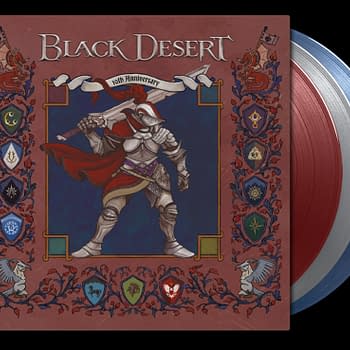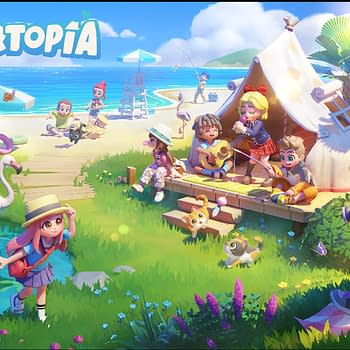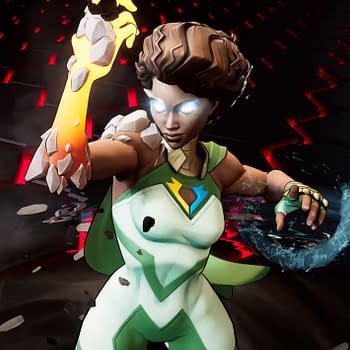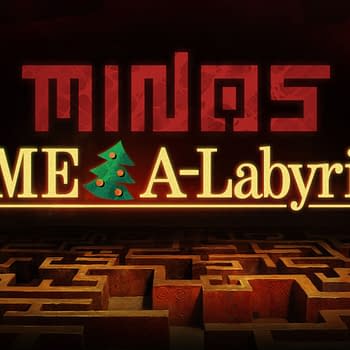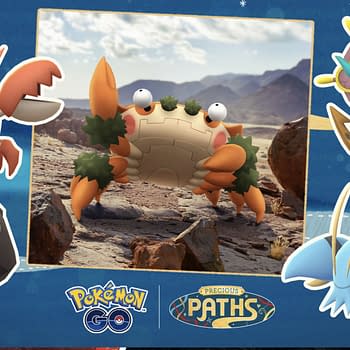Posted in: Games, Interview, Modiphius Entertainment, Tabletop | Tagged: interview, Modiphius Entertainment, star trek, Star Trek: Adventures, Tabletop, TTRPG
Interview: Chatting With Modiphius About Star Trek Adventures
One of the big-breaking TTRPG titles for Modiphius Entertainment over the past few years has been the popular Star Trek Adventures. Taking place in the universe we all know and love from several TV shows and films, the company has been creating guides and adventures for those who wish to go on insane adventures through Starfleet the same way fantasy fans have been playing D&D and sci-fi fans have been playing Starfinder. The game has steadily been expanding over time to include content from all four quadrants, various divisions, stories set in specific shows and with familiar ships, and even recently expanded to have Klingon adventures. But how did the company end up working on this RPG and what do they have in store? We chatted with Chief Creative Officer and co-founder of Modiphius Chris Birch and Project Manager for Star Trek Adventures Jim Johnson about those very topics.
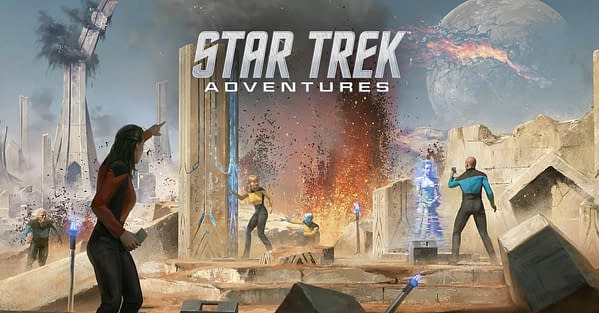
BC: Modiphius is primarily known for working on its own licenses, like Achtung! Cthulhu. But it also works on other IPs such as Fallout and Dishonored. What attracted your team to make a Star Trek game, and how do you choose what licenses you'd like to work on?
Chris: I go after what I love, licenses that I've had a strong connection with. I know when you really love something you have so much more interest in making it a success, and you're going to end up working long hours on it so it might as well be something you care about! I grew up watching Captain Kirk in the original series Star Trek reruns so being able to work on a brand like that was amazing.
What specifically made Star Trek a compelling franchise to work with and make a roleplaying game for?
Chris: There were several previous successful roleplaying games for Star Trek so we knew there was a big audience, but there hadn't been a release in over ten years so likely the audience would respond well to a new game. We got the intro at the right time for our company so it was a perfect opportunity.
Jim: Star Trek as a 55+ year franchise also hits on a lot of critical values that are worthy of exploring in a tabletop game space – diversity, inclusion, equity, hitting a sense of wonder, and striving for knowledge and hope. Quite the departure from 21st-century cynicism.
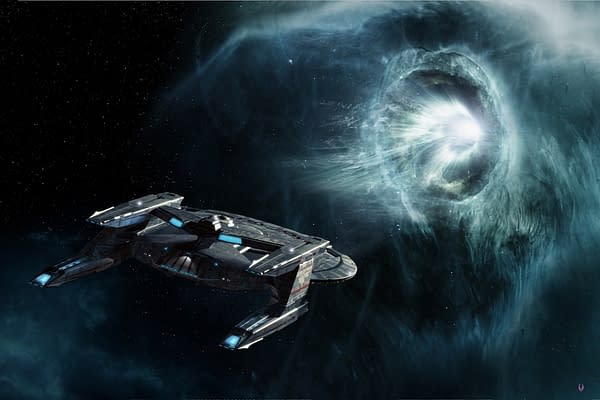
Since Star Trek spans several timelines and parallel universes, what did you focus on for the core rulebook?
Chris: When we launched, Discovery hadn't been created and The Next Generation audience was by far the bigger—we knew that from talking to CBS but also from surveys we did of the fanbase. So whilst I had grown up on a diet of The Original Series, I know the timeline of Next Generation.
What are some of the expansions you've released so far? Do you find audiences responded more to specific ones more than others? Any personal favorites?
Jim: Almost six years in, we have a wealth of material for the game. Three division books, four quadrant books, two adventure compendiums, dozens of digital-only releases, and more. I think my favorites are the new Shackleton Expanse Campaign Guide, which is a massive sandbox setting and epic ten-part campaign, and the new Player's Guide, which really expands the playing options beyond Starfleet and Klingon characters and opens the universe up to any sort of characters players can imagine playing in the game.
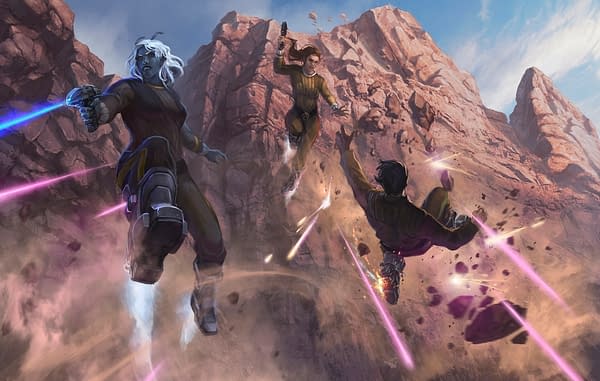
As the game uses your in-house 2D20 system, can you briefly explain how the rules work?
Jim: At its most basic, the gamemaster presents a task and suggests an Attribute and Discipline to use to attempt that task, and assigns a difficulty number (0-5). The player adds up their character's values in the Attribute and Discipline and then rolls 2d20. If they roll enough successes, they succeed at the task. If they don't, they fail. Any extra successes become Momentum, a metagame currency that can be spent to do more interesting things within the context of the scene and the game.
Chris: Also, there's a free Quick Start available that helps players jump right in, which you can find here.
How did you customize the 2D20 system to fit the tone of Star Trek?
Jim: Nathan Dowdell took the 2d20 system and adapted it specifically to Star Trek so that the game presented an authentic Star Trek experience at the game table. He did this by changing the names of the mechanical bits, focusing on the scene economy that makes Star Trek feel like Star Trek on screen, and adding in loads of examples pulled right from the episodes and movies.
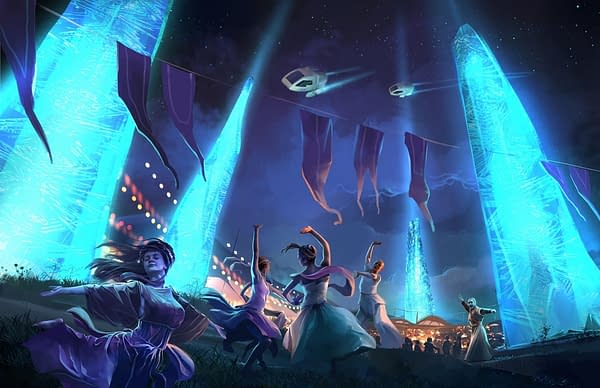
A common complaint about sci-fi TTRPGs is that while some games have great combat and social systems for the characters, but starship combat doesn't feel as "awesome" as it could. How has your team tackled ship combat?
Jim: Every character has something to contribute. If for some reason a given PC can't participate in ship combat, the player can go into troupe mode and play a supporting character who is involved. So while every character might not get into the pew-pew, every player can.
Are there any design team members who have worked on Star Trek in the past?
Jim: Among our writing team are writers who have either worked directly on one of the productions or have consulted on one of the productions. We also have several writers who have written many Star Trek novels and related books. New York Times and USA Today bestselling author Dayton Ward contributed to several books on the line, as did Star Trek (and other fiction) writers Christoper L. Bennett, Keith R.A. DeCandido, Scott Pearson, Jim Johnson, Derek Tyler Attico, and Kelli Fitzpatrick. Longtime Star Trek designer Rick Sternbach consulted and contributed to the core rulebook, two sets of map tiles, and provided schematics for Narendra Station, the focal point of the Shackleton Expanse Campaign Guide.
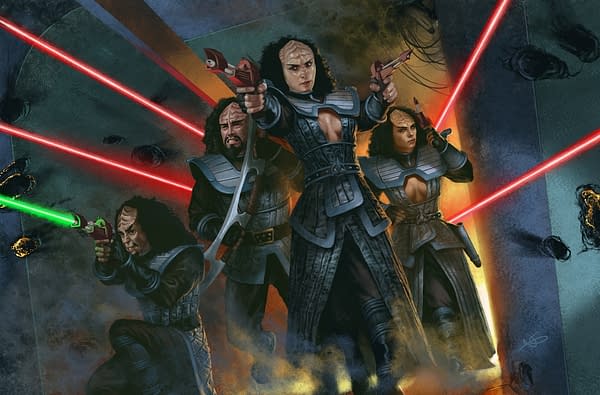
Are there any classic storylines from any of the shows or films you'd like to bring into the TTRPG? Or any you have brought over that people may have missed?
Jim: We tend to avoid rehashing existing storylines or reusing canon characters. The game is more focused on enabling gamemasters and players to create their own Star Trek characters and stories on their ship.
You guys recently launched the Tricorder edition, which packs a few books and other content into a box that looks like the '60s Tricorder. How did that design come about? Any other designs like this coming out in the future?
Chris: We were discussing cool products we could make for the game line and had made this massive Borg Cube collectors box set that the fans really loved. As our first releases focused on the Next Generation, we started talking about something based around the original series, and the concept of the first "wearable roleplaying game" came out with the Tricorder edition.
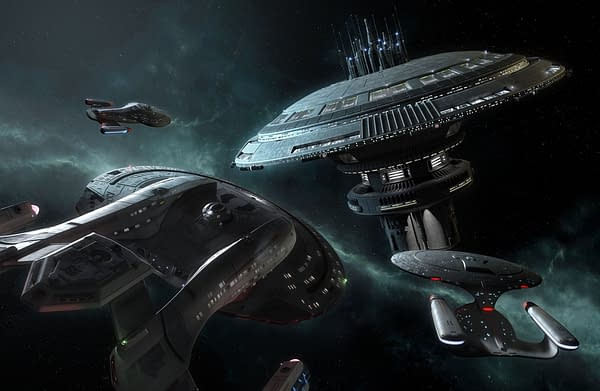
Obviously, you can't reveal much, but can you tell us what you're working on for Star Trek Adventures in the future?
Chris: Next up is a campaign setting sourcebook for the first two seasons of Star Trek: Discovery, and then a comprehensive Starfleet sourcebook. Much more to come after that as well!
Is there anything else about the game you'd like fans to know?
Jim: Find a group and get playing! Download one of the free quickstart guides or check out the starter box set and start a group and try it out. Get into the online fan scene–there are many STA groups and sites out there, and the fans are amazingly supportive of new players. We're all one big, happy fleet!





